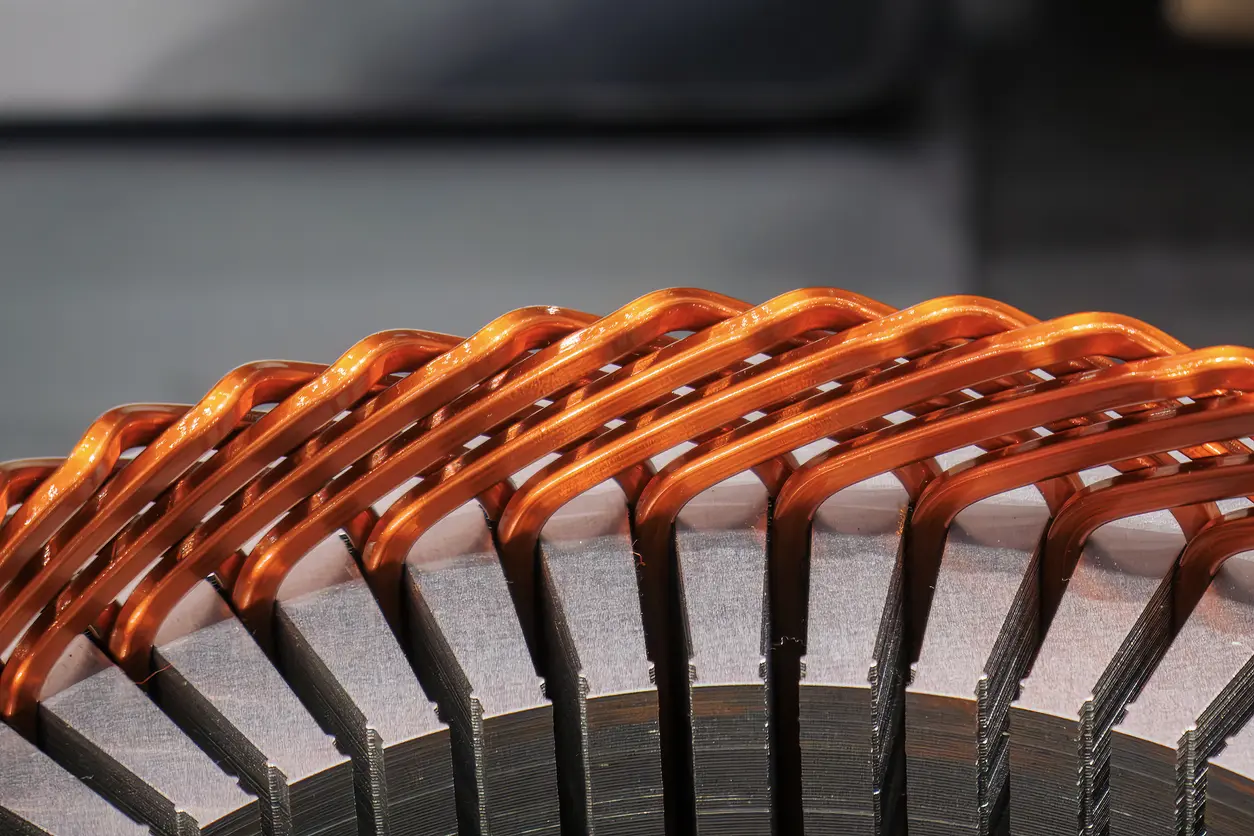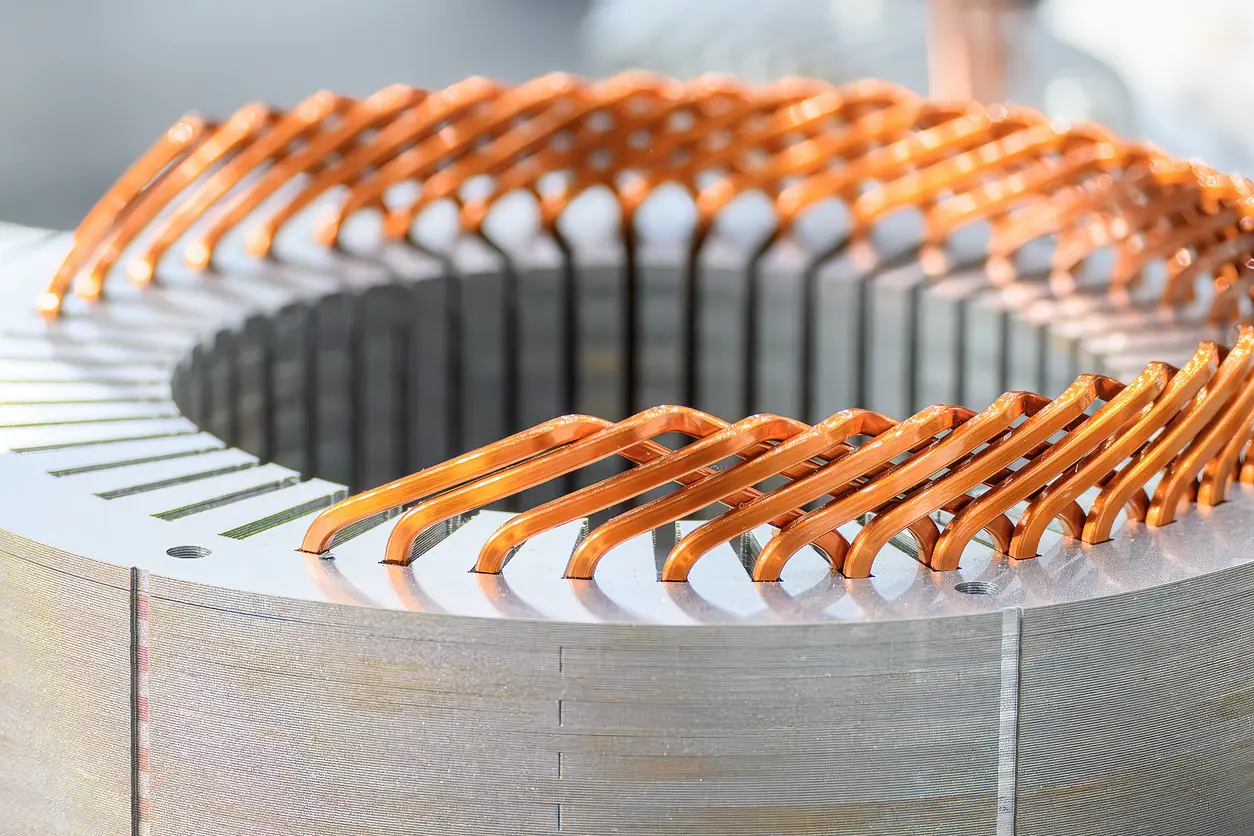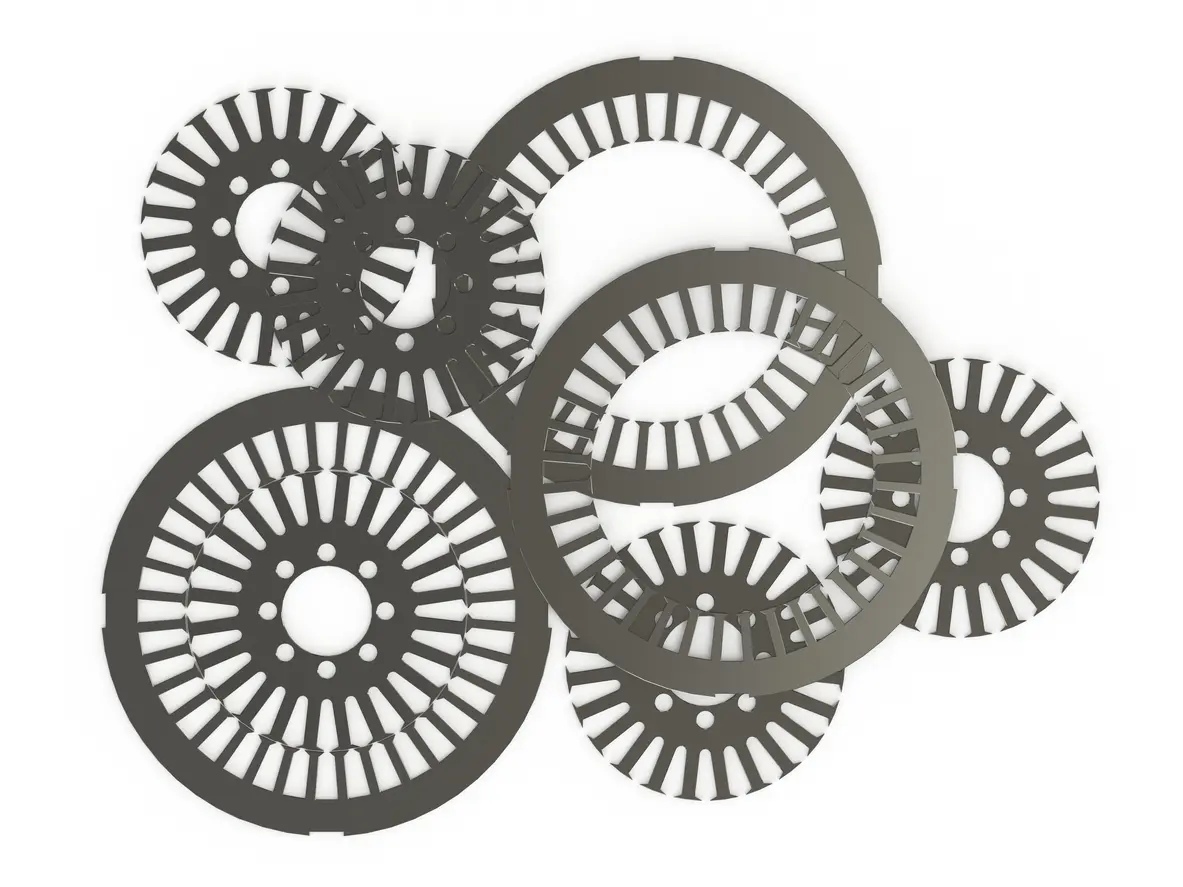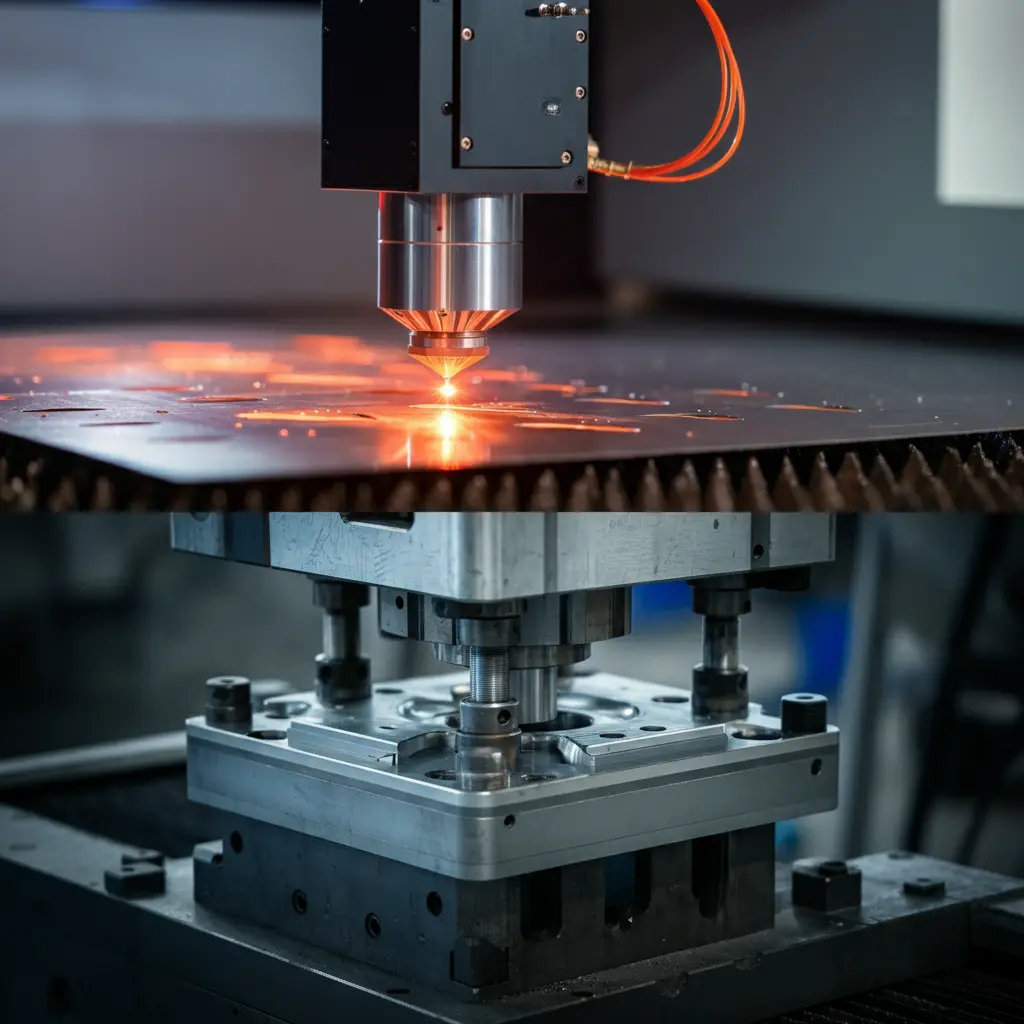1. Introduction to BLDC Core Lamination
1.1 What Is BLDC Core Lamination?
BLDC core lamination refers to the thin layers of steel assembled within a brushless DC motor’s stator or rotor to minimize energy losses. When these laminated sheets are precisely stacked, they effectively reduce eddy current losses by limiting the flow of stray currents. This design aspect not only boosts the motor’s efficiency but also helps maintain an optimal temperature range during operation. In many cases, these laminations are made of specialized electrical steel that balances cost with magnetic properties. Although BLDC core lamination might appear to be a straightforward concept, it involves detailed engineering decisions around material grade, thickness, and manufacturing techniques.
1.2 Key Components of a BLDC Motor
A BLDC motor typically consists of three major parts: the stator, the rotor, and the electronic controller. The stator includes the lamination stack and the windings, both of which are crucial for creating the electromagnetic field that drives rotation. The rotor generally houses permanent magnets arranged to interact with the stator’s magnetic field. Finally, an electronic controller manages the commutation process by precisely timing current flow to the windings. All these components need to be carefully designed to achieve balance between performance, reliability, and cost. Particularly, the choice of materials and design for BLDC core lamination has a profound impact on energy efficiency and operational stability.
1.3 Why BLDC Core Lamination Costs Can Skyrocket
While BLDC core lamination is essential for efficiency, it can also account for a significant portion of the motor’s overall expense. High-grade electrical steels and specialized processing methods often come with elevated price tags. Moreover, tight tolerances in cutting, stacking, and bonding introduce additional manufacturing complexity. Even minor deviations can lead to higher scrap rates, further increasing costs. In addition, maintaining quality control—especially for larger production runs—demands significant investment in both equipment and labor. As a result, stakeholders must carefully weigh the benefits of high-quality BLDC core lamination against the associated costs to make informed business decisions.
2. Hidden Cost Factors in BLDC Core Lamination
2.1 Material Selection and Grade
Choosing the right material for BLDC core lamination can significantly influence both performance and overall expenditure. While premium electrical steels offer better magnetic properties and lower core losses, they also tend to be more expensive. At the same time, lower-grade materials may be cost-effective initially but can result in higher energy losses and reduced lifespan. Striking the right balance is crucial: a material that suits the motor’s design requirements while minimizing total ownership costs. Additionally, consistent material supply is essential, as sudden shifts in quality or availability can disrupt production and inflate expenses.

2.2 Production Efficiency
Production efficiency plays a decisive role in determining the final cost of BLDC core lamination. Whether the manufacturing process relies heavily on manual labor or state-of-the-art automation, each step impacts the bottom line. For instance, extended downtimes due to equipment maintenance, or high scrap rates stemming from inaccuracies in punching or stacking, can lead to substantial cost overruns. Conversely, streamlined workflows and well-maintained machinery help ensure consistent quality, reducing the risk of defects. Embracing automation where feasible can also bolster precision, leading to fewer wasted materials and more predictable production times.
2.3 Maintenance and Tooling
The maintenance and tooling of production equipment is another often-overlooked factor that influences the cost of BLDC core lamination. Dies used for cutting or punching laminations require periodic re-sharpening or replacement to maintain dimensional accuracy. Neglecting these measures may lead to subpar laminations, driving up rejection rates and eroding profit margins. Furthermore, sourcing spare parts for specialized machinery can be time-consuming and expensive. Organizations must also account for the indirect costs of downtime during maintenance intervals. By adopting a proactive approach to tooling care and asset management, manufacturers can effectively curb unplanned expenditures and keep production on schedule.
3. Technique 1: Optimize Material Selection
3.1 Choose the Right Electrical Steel Grade
Selecting the appropriate electrical steel grade forms the backbone of a high-performing BLDC core lamination. While specialized steel grades with higher silicon content tend to reduce core losses, their upfront costs can be substantially higher than standard grades. The trick lies in finding a material that offers a balanced trade-off between performance, reliability, and cost. Factors such as magnetic permeability, saturation flux density, and lamination factor need to be taken into account. As a result, organizations should invest time in laboratory testing or simulation methods to confirm that the chosen steel grade aligns with the motor’s operational requirements, without overwhelming the budget.
3.2 Thickness Matters
In BLDC core lamination, the thickness of each lamination sheet directly affects both efficiency and manufacturing complexity. Thinner laminations generally help to lower eddy current losses, enhancing the overall performance of the motor. Yet, such thin sheets can be more difficult and expensive to process, requiring higher precision during punching or cutting. Conversely, thicker laminations are easier and cheaper to produce but could lead to higher core losses. Thus, engineers and procurement teams must weigh the benefits of lowered losses against the added production costs. Identifying the ideal thickness calls for a thorough analysis of the motor’s application, anticipated load conditions, and operational lifespan.
3.3 Supplier Partnerships
Working closely with a reliable supplier can yield significant benefits for your BLDC core lamination needs. Partnering with a trustworthy vendor ensures consistent material quality, reduces the likelihood of supply chain disruptions, and can potentially lower costs through volume-based discounts. Such collaborations also offer insights into emerging materials and manufacturing advancements, enabling more informed decision-making. While it may be tempting to switch suppliers in pursuit of cost savings, stability and a proven track record often hold greater value in the long run. Ultimately, a strong partnership can streamline material selection and help maintain consistent production quality, allowing companies to stay competitive in an ever-evolving market.
4. Technique 2: Streamline Manufacturing Processes
4.1 Automated Stacking and Pressing
Automation can substantially improve both the quality and cost-effectiveness of BLDC core lamination. For example, automated stacking systems precisely align and assemble individual laminations, reducing human error and scrap rates. Over time, even minor misalignments can affect a motor’s overall performance, so automated processes help ensure consistent results. In addition, automated pressing equipment exerts uniform pressure during the stacking or bonding phase, further enhancing lamination stability. While initial investment in machinery may be significant, many manufacturers find that the resulting gains in throughput and quality more than justify the expense. Ultimately, a well-implemented automation strategy helps minimize labor costs and production variability.
4.2 Advanced Tooling and Die Design
Precision tooling and innovative die designs are critical to achieving high-quality BLDC core lamination at a competitive cost. Well-engineered dies reduce dimensional deviations, leading to fewer rejected parts and lower material wastage. They can also shorten the time needed for punching or cutting each lamination, accelerating overall production. However, advanced tooling often requires rigorous maintenance, including periodic re-sharpening or part replacement. By scheduling regular inspections and adhering to maintenance best practices, manufacturers can ensure their dies remain in peak condition. Though it may seem like an added expense, thoughtful investment in tooling can pay significant dividends by minimizing both downtime and scrap rates.

4.3 Lean Manufacturing and Production Flow
Adopting lean manufacturing principles can further streamline BLDC core lamination processes by eliminating unnecessary steps and optimizing workflow. For instance, mapping out the production line helps identify bottlenecks—areas where materials or subassemblies accumulate unnecessarily. In many cases, these inefficiencies can be addressed by rearranging equipment or refining communication between different stations. Additionally, collecting and analyzing production data can reveal trends or recurring issues, prompting timely interventions. A continuous improvement mindset, supported by staff training and clear performance metrics, fosters an environment where everyone collaborates to enhance efficiency. Over time, lean principles help reduce wasted resources, safeguard quality, and maintain competitive pricing.
5. Technique 3: Focus on Innovative Stacking Methods
5.1. Riveting Lamination
Riveting lamination is a practical approach designed to securely hold layers of BLDC core lamination together without relying heavily on adhesives. In many designs, rivets interlock the laminations by passing through pre-punched holes in each sheet. This system effectively eliminates or minimizes the need for bonding agents, potentially reducing both material and labor costs. Additionally, riveting ensures a more streamlined assembly process, as operators can rapidly align the laminations and secure them with standardized hardware. This can lead to reduced cycle times and greater consistency in production output.
However, there are some potential drawbacks to consider. First, the riveting process demands careful tooling to maintain precision—misalignment or inconsistency in rivet placement could degrade motor performance or create vibrations. Second, the rivets themselves add a small amount of weight and bulk to the final assembly, which may be problematic in ultra-compact or lightweight motor designs. Lastly, introducing rivets can create stress points in the lamination stack, especially under high-speed rotation, so rigorous testing is recommended to confirm the method’s suitability for a specific BLDC core lamination application.
5.2. Glue Bonding and Adhesive Solutions
In contrast to riveting, glue bonding employs adhesives that join the lamination layers into a single, cohesive unit. Various adhesives—including epoxy, anaerobic, and high-temperature-resistant formulations—are used depending on the operational requirements of the motor. One significant advantage is the potential to reduce vibration and noise, as a properly applied adhesive layer provides damping between sheets. In addition, automated adhesive dispensing systems can enhance consistency while lowering labor costs and the risk of human error.
Despite these benefits, adhesive bonding can introduce complications. Longer curing times may slow production, and certain adhesives come with environmental or regulatory requirements that could limit their use. Properly balancing cost, durability, and processing speed is essential to fully leverage glue bonding for BLDC core lamination. Ultimately, choosing between riveting and adhesives often depends on the specific performance, production, and cost objectives of a particular motor design.
Further Reading:
https://www.electrocraft.com/resources/articles/bldc-motors-design-guide





